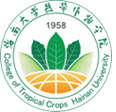Whole Genome Assembly and Annotation of Magnolia biondii
| Element | Count |
|---|---|
| Features | 41,181 |
| Samples | 6 |
| Name | Tissue | Treatment | Description |
|---|---|---|---|
| CL100074502_L02 | leaf | Not set | |
| CL100077117_L01 | leaf | Not set | |
| hua_1 | flower | Not set | |
| huaya_1_1 | flower bud | Not set | |
| huaya_2_1 | flower bud | Not set | |
| yepian_1 | leaf | Not set |

| Resource Type | Analysis |
|---|---|
| Name | Whole Genome Assembly and Annotation of Magnolia biondii |
| Description | Magnolia biondii Pamp. (Magnoliaceae, magnoliids) is a phylogenetically, economically, and medicinally important ornamental tree species widely grown and cultivated in the north-temperate regions of China. Determining the genome sequence of M. biondii would help resolve the phylogenetic uncertainty of magnoliids and improve the understanding of individual trait evolution within the Magnolia genus. We assembled a chromosome-level reference genome of M. biondii using ~67, ~175, and ~154 Gb of raw DNA sequences generated via Pacific Biosciences single-molecule real-time sequencing, 10X Genomics Chromium, and Hi-C scaffolding strategies, respectively. The final genome assembly was ~2.22 Gb, with a contig N50 value of 269.11 kb and a BUSCO complete gene percentage of 91.90%. Approximately 89.17% of the genome was organized into 19 chromosomes, resulting in a scaffold N50 of 92.86 Mb. The genome contained 47,547 protein-coding genes, accounting for 23.47% of the genome length, whereas 66.48% of the genome length consisted of repetitive elements. We confirmed a WGD event that occurred very close to the time of the split between the Magnoliales and Laurales. Functional enrichment of the Magnolia-specific and expanded gene families highlighted genes involved in the biosynthesis of secondary metabolites, plant–pathogen interactions, and responses to stimuli, which may improve the ecological fitness and biological adaptability of the lineage. Phylogenomic analyses revealed a sister relationship of magnoliids and Chloranthaceae, which are sister to a clade comprising monocots and eudicots. The genome sequence of M. biondii could lead to trait improvement, germplasm conservation, and evolutionary studies on the rapid radiation of early angiosperms. |
| Program, Pipeline, Workflow or Method Name | Assembly and Annotation Performed by Canu v. 0.1, Miniasm v. 0.3, Wtdbg v. 1.1.006, Flye v. 2.3.3 and SMARTdenovo 1.0.0 |
| Program Version | Phytozome v9 |
| Algorithm | |
| Date Performed | Monday, March 1, 2021 - 08:32 |
| Data Source |






